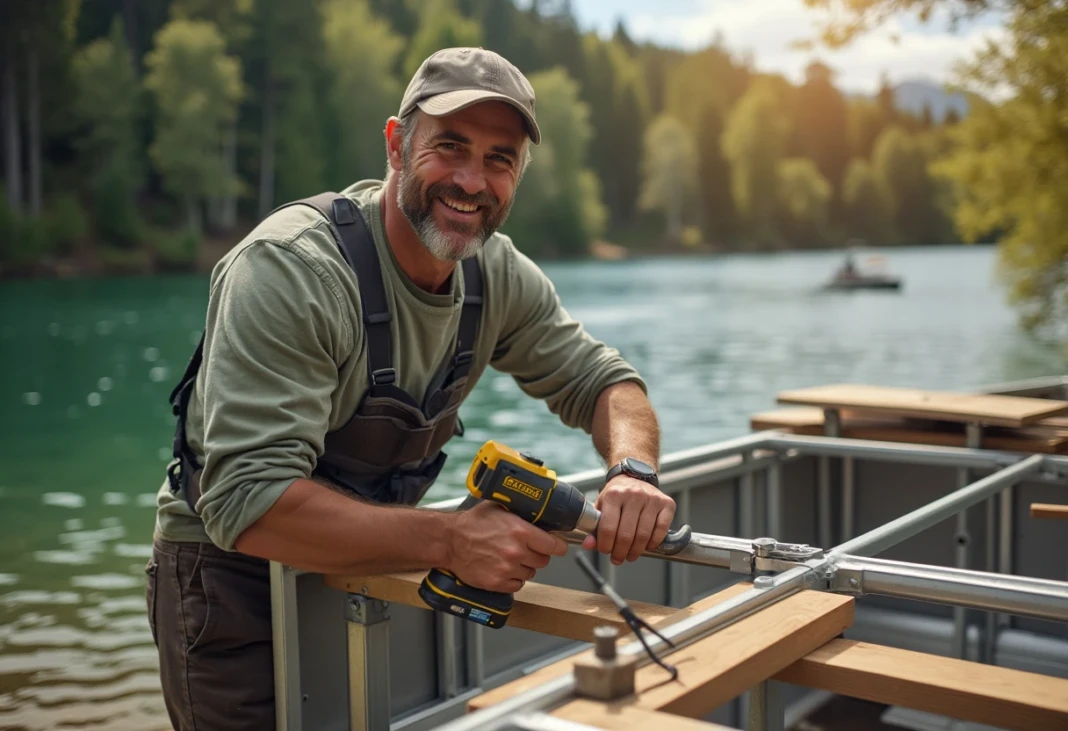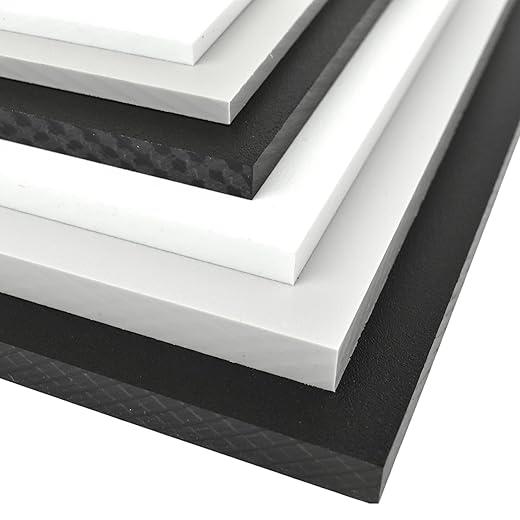Pontoon Boat Building
A pontoon boat is a versatile watercraft that provides immense pleasure for fishing, cruising and water sports. Building your pontoon boat provides you with a unique opportunity to design a boat that meets your specific needs. You also get to save money compared to buying a new one from a dealer. However, building a pontoon boat can be a daunting task, especially for first-timers.
Basics of Pontoon Boats
A pontoon boat consists of a platform resting atop two or more airtight tubes or pontoons. The pontoons provide the buoyancy that keeps the boat afloat, while the design of the deck provides the strength and stability to support the weight of people and equipment on board.
Benefits of Building Your Own Pontoon Boat
Building your pontoon boat is a fun and rewarding activity that allows you to customize your boat to meet your needs. It also saves you a considerable amount of money compared to buying a new one. Additionally, you learn valuable boating skills and gain experience in boatbuilding.
Tools and Materials Needed for the Project
Before beginning the construction, gather all the necessary tools and materials for the project. Some of the essential tools you need include saws, drills, hammers, and measuring tools. The materials required for the project include pontoons, aluminum frames, plywood, and hardware like bolts and screws.
Designing Your Pontoon Boat
If you want to build your own pontoon boat, the first step is to determine the size and purpose of your boat. Consider what you’ll be using your boat for so that you can design it accordingly. Are you planning to use it for fishing, leisure, or water sports? The size of your boat will also depend on how many passengers you’d like to accommodate.
Once you’ve determined the purpose and size of your boat, you can move on to creating detailed plans and drawings. You can start with a rough sketch of your boat design and gradually refine it based on your needs. There are several free design software and apps available that can help you with creating accurate drawings of your boat. Make sure to take into account all of the components of your pontoon boat, including the frame, pontoons, and deck.
After you’ve created the initial design, you can then move on to selecting the right materials for the pontoons. Pontoon boats are typically made of either aluminum or steel, and each material has its own advantages and disadvantages. Aluminum pontoons are lightweight and corrosion-resistant, but they can be more expensive. Steel pontoons are heavier but less expensive, and they can be more durable if properly maintained.
Another important consideration when designing your pontoon boat is the placement of the pontoons. The placement and distribution of the weight will have a significant impact on your boat’s stability and buoyancy. Be sure to consult with experts or refer to online resources to ensure that you have a well-designed pontoon boat.
Overall, designing your pontoon boat can be a fun and exciting process, but it requires careful planning and attention to detail. Take your time and make sure you have a solid plan before moving on to the next step of constructing the pontoons.
Constructing the Pontoons
Building the pontoons for your pontoon boat is a crucial step. The pontoons are the foundation and structure of the entire boat and provide buoyancy and stability. Here is a step-by-step guide on how to construct the pontoons for your pontoon boat.
Step 1: Gather Materials
The first step is to gather all the materials needed for the pontoon construction. The materials needed include aluminum sheets, foam insulation, marine-grade plywood, and resin. The aluminum sheets will be used for the pontoons while the foam insulation will be inserted into the pontoons to provide buoyancy. The marine-grade plywood will be used for the flooring of the boat.
Step 2: Cut Aluminum Sheets and Foam Insulation
The aluminum sheets should be cut according to the measurements of the pontoons you have designed. The foam insulation should also be cut according to the dimensions of the pontoons. The foam insulation will be inserted into the aluminum sheets to provide buoyancy.
Step 3: Construct the Pontoons
Lay one aluminum sheet on a flat surface and insert the foam insulation into it. Then, place the other aluminum sheet on top of the foam insulation, sandwiching it in between the two sheets. Use resin to glue the aluminum sheets together.
Step 4: Seal the Pontoons
Once the pontoons are constructed, they should be sealed to prevent any water from entering. Use resin to seal any gaps or openings in the pontoons. It is also important to conduct a leak test to ensure the pontoons are sealed correctly.
Step 5: Ensure Buoyancy and Stability
Before assembling the boat, it is important to ensure that the pontoons provide sufficient buoyancy and stability. The weight of the boat should be equally distributed between both pontoons. This can be achieved by placing the boat on a flat surface and checking if it is level.
Step 6: Attach Brackets and Hardware
After ensuring buoyancy and stability, attach brackets and desired hardware to the pontoons. This includes any handrails or accessories that will be mounted onto the pontoons. This step is crucial in ensuring the safety of the boat.
Step 7: Final Inspection
Conduct a final inspection of the pontoons to ensure they are properly constructed and ready for use. This includes checking for any leaks or gaps, as well as ensuring that the pontoons are centered and level.
By following this step-by-step guide, you can construct the pontoons for your pontoon boat correctly and ensure its safety and stability on the water.
Assembling the Deck and Frame
Designing the layout of the deck is a crucial step in your pontoon boat building journey. In this section, we will help you construct the frame and attach the pontoons and install the decking surface and safety railings.
Constructing the Frame and Attaching the Pontoons
The frame of your pontoon boat should be sturdy and able to withstand the weight of the boat and everything it carries. You can make the frame by welding metal pipes together. We recommend that you use treated lumber for the cross members.
Once your frame is ready, it’s time to attach the pontoons. The exact process depends on the type of pontoon you’re using. However, the general process involves inserting the pontoons into the brackets welded to the cross members and bolted into place.
Make sure that the height of the pontoons is aligned with the frame to ensure stability. Additionally, check that the pontoons are welded straight and true so that they are evenly aligned with the deck surface.
Installing the Decking Surface and Safety Railings
The decking surface is the platform that will support the passengers and cargo. Choose high-quality marine-grade plywood or fiberglass for the decking surface. To attach the decking, you can use self-tapping screws or bolts to the cross members.
Once the decking is in place, add the safety railings around the perimeter of the boat. You can also add additional features like benches, tables, and storage compartments at this stage.
Remember that safety is paramount when building a pontoon boat. The safety railings should be at least 30 inches high to prevent passengers from falling overboard.
The deck can also be finished with a non-slip coating to prevent accidental falling or slipping. Additionally, always ensure that you follow all local boating regulations and safety requirements.
Assembled the deck and frame properly, you are one step closer to realizing your dream pontoon boat.
| Key Data Points | Details |
|---|---|
| Deck Design | Designing the layout of the deck is crucial when building a pontoon boat. |
| Frame Construction | The frame should be sturdy enough to withstand the weight of the boat and everything it carries. |
| Pontoon Attachment | General process involves inserting the pontoons into the brackets welded to the cross members and bolted into place. |
| Decking Surface | Choose high-quality marine-grade plywood or fiberglass for the platform. |
| Safety Railings | Install railings at least 30 inches high around the perimeter of the boat to prevent passengers from falling overboard. |
| Non-Slip Coating | Deck can be finished with a non-slip coating to prevent accidental falling or slipping. |
| Regulations and Safety | Always ensure that you follow all local boating regulations and safety requirements. |
Finalizing Your Pontoon Boat
Now that you have completed building the frame and pontoons of your pontoon boat, it is time to take care of the final touches that will make it truly your own.
Installing the Motor and Steering Mechanism
The first step in finalizing your pontoon boat is installing the motor and the steering mechanism. You’ll need to choose a motor based on the size and purpose of your boat, as well as the intended use. A larger motor will provide more power, but it will also consume more fuel. You will also have to select the right type of steering mechanism, such as a cable or hydraulic system. Once you have chosen and installed the motor and steering, you will be ready to hit the water.
Adding Furniture and Custom Features
Next, it’s time to add the furniture and any custom features that you want to include on your pontoon boat. This could include things like seats, tables, storage compartments, and even a bathroom. You will want to choose furniture that is comfortable, functional, and matches the overall design of your boat. Custom features could include anything from a sound system to a built-in grill. The sky’s the limit when it comes to customizing your pontoon boat.
Conducting a Safety Inspection and Maintenance Tips
Before heading out on the water, it is crucial to conduct a thorough safety inspection of your pontoon boat. This should include checking the flotation devices, first aid kits, and safety equipment such as life jackets and fire extinguishers. You should also inspect the motor and steering systems, as well as all the furniture and custom features, to ensure they are all secured properly.
Maintenance is also key to keeping your pontoon boat in top shape. Regular cleaning and upkeep will help to prevent damage and keep your boat looking great. Follow the manufacturer’s instructions for all the equipment and systems on your boat, and make sure to address any issues promptly. By taking care of your pontoon boat, you can enjoy it for many years to come.
Frequently Asked Questions
- Q: How much does it cost to build a pontoon boat?
A: The cost to build a pontoon boat can vary widely based on factors such as the size, type, and quality of materials used. On average, you can expect to spend anywhere from $5,000 to $25,000 to build your own pontoon boat.
- Q: Do I need any special tools to build a pontoon boat?
A: While some specialized tools may be helpful, you can generally build a pontoon boat using basic woodworking and metalworking tools, such as a saw, drill, and welder.
- Q: Is it difficult to build a pontoon boat?
A: Building a pontoon boat is a complex project that requires a fair amount of mechanical and technical knowledge. However, with the right instructions and materials, it is possible for most people to successfully build their own pontoon boat.















